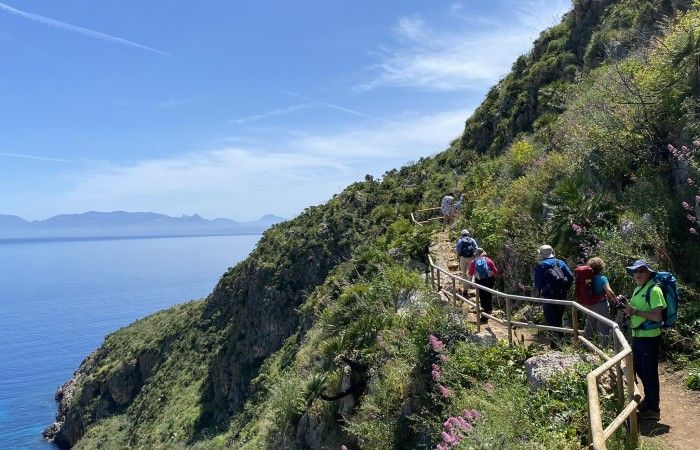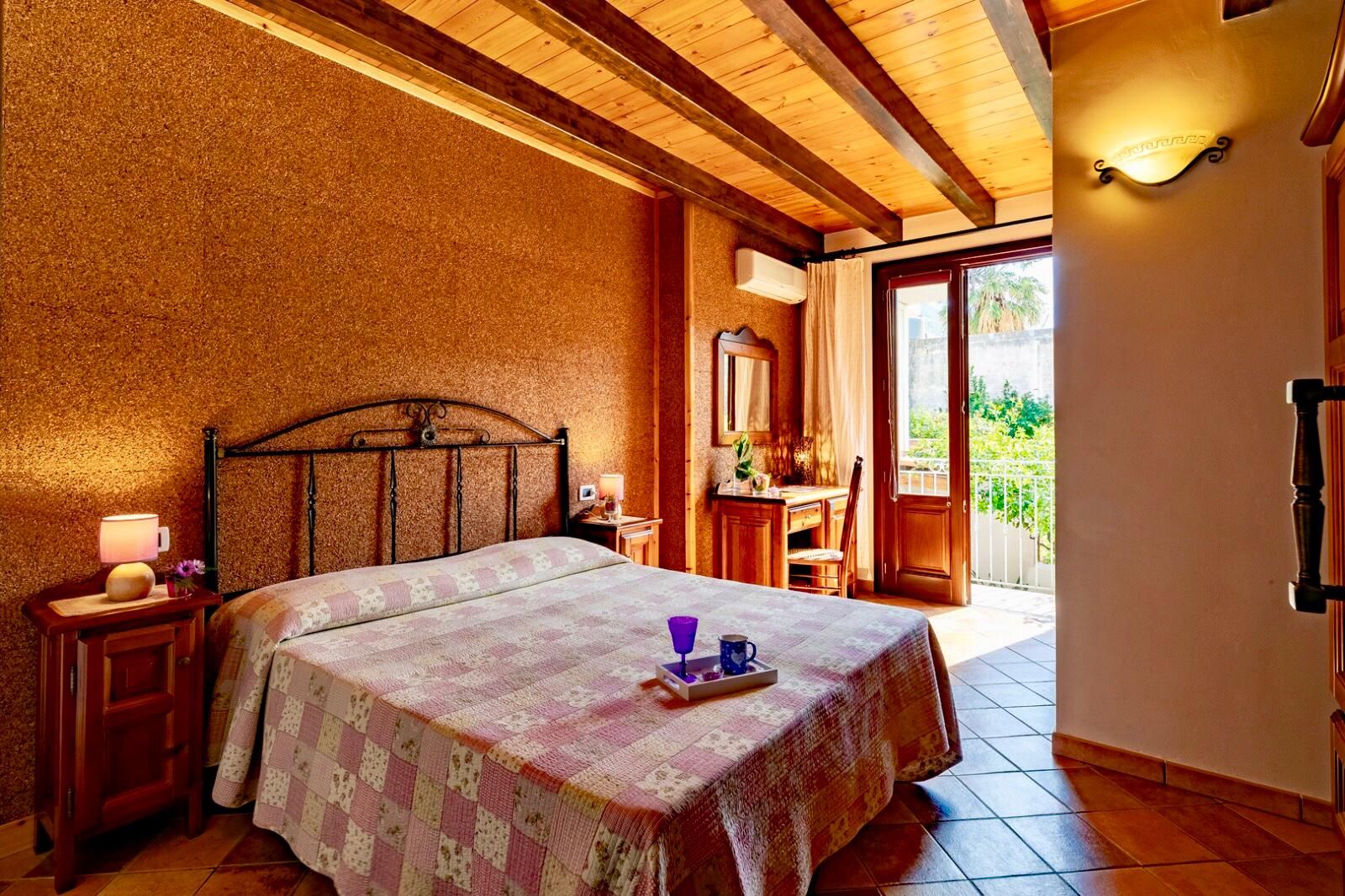Walking along the Zingaro paths is an experience to be fully enjoyed
Grief and anger over the fire that devastated the Zingaro Nature Reserve. A unique natural heritage, destroyed in just a few hours. It is a profound wound for those who love Sicily and its landscapes. The Management informs that the Reserve will remain closed until further notice.
Boat trips take place regularly
In the stretch of coast that goes from San Vito Lo Capo to Castellammare del Golfo , seven kilometers of uncontaminated nature where birds of prey live and nest, extends the Zingaro Nature Reserve , one of the most famous in Italy; those who want to immerse themselves in timeless nature, where past and present blend harmoniously, cannot help but visit it.
The ancient Greeks and Latins called it Cetaria due to the abundance of tuna found in its waters.
The Reserve covers an area from north to south of the small peninsula of San Vito Lo Capo and starting from the small seaside village you can reach its northern entrance in just 20 minutes by car.
The first beach you come across when entering from the North side is the largest in the Zingaro Reserve and also the busiest in summer.
Tonnarella dell'Uzzo , awarded in the past by tourists in a survey carried out by Skyscanner , can be reached in a few minutes on foot starting from the ticket office.
If, however, you feel like walking or want to find a less crowded cove and enjoy the most hidden corners of this wonderful coast, all you have to do is reach the other coves: Cala Torre dell'Uzzo, Cala Marinella, Cala Beretta, Cala della Disa, Cala del Varo, reachable from the sea, and Cala della Capreria , very close to Scopello.
.
.jpg)
Describing the beauty of the Zingaro Nature Reserve is not easy.
Small bays paved with white pebbles, a sea that during the day is tinged with unexpected shades of green and blue, sharp rocks that separate the different beaches, Mediterranean scrub that seems to dive into the sea and ancient farmhouses built on the rock.
A mix of nature and discreet human presence.
The coves follow one another mixing with incomparable scents and colours, showing off all their charm.

The vegetation of the Zingaro Reserve
The vegetation is an explosion of colors especially in spring; the olive trees, almond trees, carob trees mix with the lush expanses of dwarf palms and the numerous and elegant orchids, while the ash trees and cork trees alternate with the euphorbia and mastic trees.
The dwarf palm , present throughout the area, is the undisputed symbol of the Zingaro Reserve; with its leaves, farmers created objects for everyday use, many of which are today kept in the small museums of the Reserve.
The reserve can only be visited on foot, nothing must disturb the forty species of birds that nest here, including the Bonelli's Eagle, the Buzzard, the Kite, the Kestrel and the endemic fauna.
Only those who have the patience to completely cross this unique habitat will have a truly unforgettable experience.
Zingaro reserve from the sea
Admiring the Zingaro Reserve from the sea is an exciting experience because it allows you to grasp the majesty of the place with a single glance. The high peaks of the Zingaro slope down to the sea, the green of the Mediterranean scrub mixes with the red of the rocks and plunges into the blue of its splendid waters.
The idea of a boat excursion is excellent.
You can rent a dinghy and enjoy the day independently, or take part in a boat excursion by booking one with daily departure from San Vito Lo Capo.
The Zingaro Reserve, the first in Sicily, was established in 1981 by the Sicilian Region.
We don't know why this area is called "gypsy", in fact there is no news in the historical sources of nomads who lived in these places, while the presence of a colony of Lombards in the 13th century is indicated.
Although Lo Zingaro is particularly famous for its beaches, its clear seabed rich in fish and its underwater caves, it is good to know that the reserve offers much more.
In its territory there are many anthropologically relevant realities such as Borgo Cusenza , a small group of houses abandoned in the early 1950s and now expertly recovered by the Reserve, while, close to the coast, there are testimonies of life eight thousand years ago, in the Uzzo Cave, inside which the remains of a much more recent peasant civilization are still visible today, which deserves to be remembered.
.jpg)
Within the area of the Zingaro Oriented Reserve there are 5 small museums:
the Naturalistic Museum , the first coming from the South entrance, where panels on the theme "Ethnobotany of the Gypsy" have been placed which highlight, through photographic images, spontaneous plants used in popular medicine according to the local tradition of rural communities falling within the territory of the Zingaro RNO;
the Manna Museum, located inside a cave, rustic and small, offers the viewer the view of some old tools for collecting and preserving the bark of the ash tree, from which the typical nectar is extracted.
the Weaving Museum is a space dedicated to craftsmanship. In some periods of the year it is possible to see master weavers at work who still create objects for everyday use using vegetable fibres, such as giummarra and disa .
the Museum of Rural Civilization is a witness of the ancient grain cycle. Ploughs, sickles and saddlebags are exhibited together with other objects used in working the land.
the Museum of Maritime Activities , the first entering from the North entrance.
The medicinal plants that characterize much of this territory are simple creatures that contain virtues and secrets that are not visible to the simple glance, but which for the most attentive can open up a world from which, once entered, it is difficult to escape.
A world which, beyond a health processor, represents the manifestation of perfect forms such as only nature is able to offer us. Let us learn to know and respect these wonderful gifts. (source reservezingaro.it)

How to get to Zingaro
From San Vito lo Capo continue towards Villaggio Calampiso – Riserva Zingaro.
Useful Information:
Management Tel.: +39 0924 35108
Supervisory Team:
Tel./fax: +39 0924 35093
Toll-free number: 800-116616
Opening hours: Monday to Sunday
08:00 - 18:00
Attention: dogs, even if on a leash, are not allowed
Linked news

Circular trekking in the Zingaro Nature Reserve
Departure from the North entrance (San Vito Lo Capo) and stop at Borgo Cusenza.

7 amazing coves in Zingaro Nature Reserve
Seven kilometers of pristine coast, for seven magnificent beaches, between the emerald green of the sea and breathtaking landscapes.

Ten Reasons to Fall in Love with Zingaro in Autumn
Discover the wild charm of the Zingaro Reserve


_8463.jpg)





